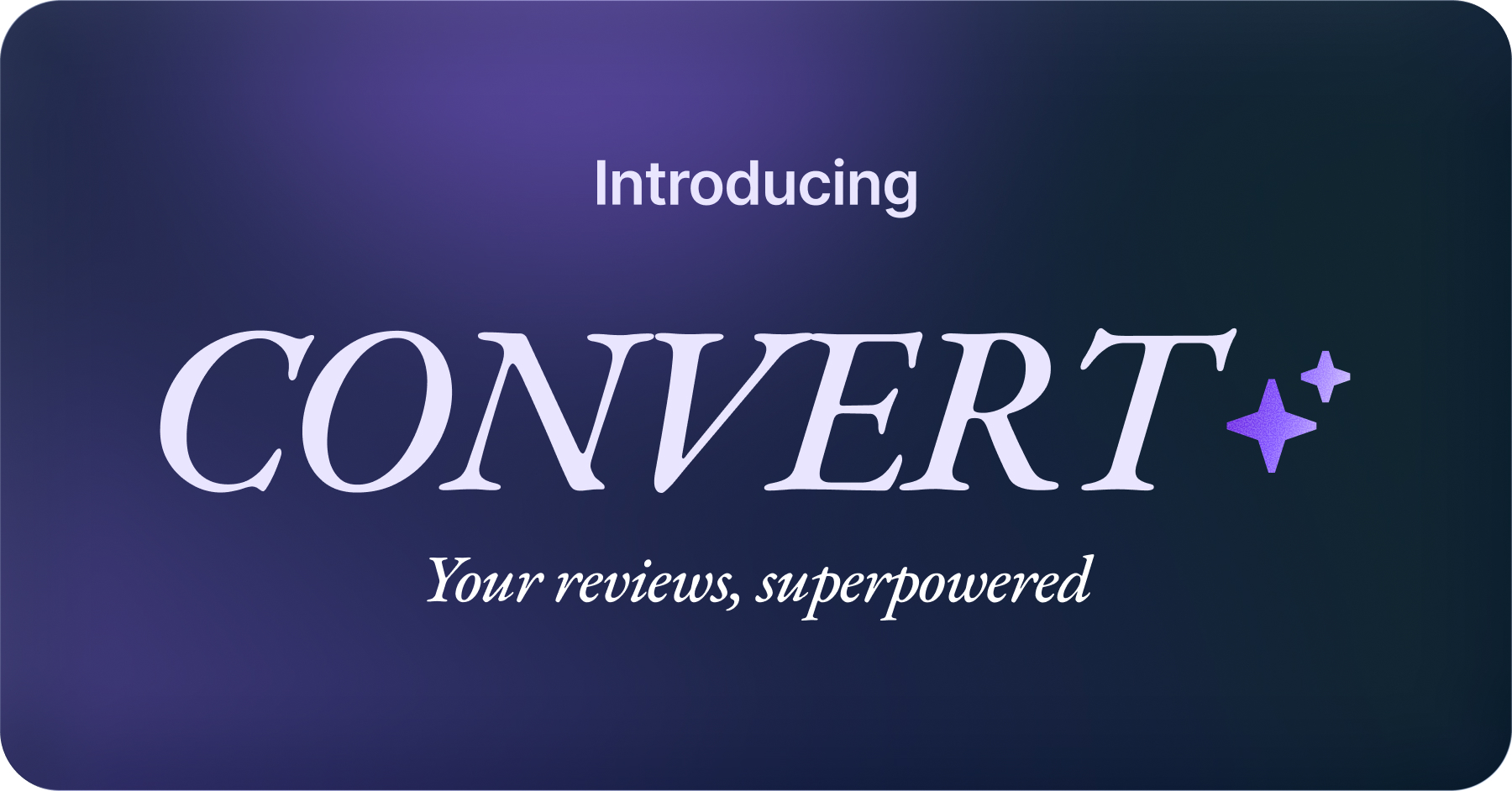10 Social Proof Strategies to Skyrocket Your Shopify Conversion Rate

Would you want to eat at a restaurant that was empty on a Saturday night?
Would you go see a movie that had zero reviews?
How would you feel if your dentist or surgeon told you they had no other patients?
Human beings are social by nature. We look to others to see if we are making the right decisions. Although there are times when we fiercely value our individuality, that doesn’t apply when it comes to parting with our hard-earned money.
Nobody wants to feel like they’re going first when making a major buying decision. Shoppers feel safe in a ‘virtual crowd’, surrounded by others making the same choices, no different than they would look for in a physical retail space.
One of the advantages of building a Shopify site is having complete control over your platform, as opposed to selling elsewhere such as Amazon, or a brick and mortar storefront.
The downside of this independence is the lack of trust and reputation that your store starts with. You have to create your own ecosystem of trust and credibility and leverage the power of social proof before visitors will pull the trigger and convert into paying customers. Failure to build social proof will lead to low conversions and ultimately spell disaster for your business.
Here are ten ideas you can start using today, to dramatically boost your social proof, credibility, and conversions.
1. Reviews, reviews, reviews.
There is no greater return on investment for your time and effort than building a strong system for collecting and managing product reviews. When it comes to conversion rate, reviews are king. Most Shopify store owners think they have this area covered, but the reality is there is always a huge room for improvement.
Bright Local found that 88% of customers surveyed said that they trusted online reviews as much as if a friend or family member recommended a product. But reviews have to be done right, or they can backfire and have the opposite effect.

Here are the results of having a great review system in place. This brand, project repat has nearly fifteen thousand 5-star reviews.
Consistently follow up with past buyers, and ask them to share their experience with a review. People have something called a negativity bias, which means the negative opinions are often the loudest. You need to work to counter this since the majority of happy customers will never think of writing a positive review.
Often all you have to do is ask, with an email follow up sequence that provides additional value. If you annoy customers with low-quality spam or hard-sells to buy more, you’re doing it wrong. Another option is to offer incentives, such as discounts on future purchases in exchange for a review.
Creating a system to collect reviews can be a lot of work, but if you’re serious about your e-commerce business, it’s mandatory. If you want to save time and automate the task, consider using a tool like Loox which automatically follows up with customers through email, web push notifications, Facebook Messenger and SMS.
2. More images of people
You can cash in on a ton of subconscious triggers when a customer sees smiling faces throughout your website. People connect with other people. Rather than just looking at an inanimate product, customers want to connect with real human emotions when they make a buying decision.
Extensive A/B testing in the industry has proven this time and time again. Visitors are drawn to a human face, and the simple addition of faces to landing pages has been shown to improve conversions by about 50%.
Modern audiences prefer more candid, raw-looking photography than overly slick corporate photography which has proven to be less trustworthy than no images at all.

Here’s an example of Morrison outdoors absolutely nailing this concept. The photos are practically inviting the viewer to jump in and join the fun. It’s all about emotions.

3. Strategically highlight your best reviews and testimonials
Reviews and testimonials don’t have to be limited to one section of your site. Consider featuring your best testimonials in different placements.
Repetition is a powerful tool to build familiarity and trust. If a customer sees social proof in the form of testimonials, throughout different pages of your site, it can quickly bring them through the buyer journey. It will take them from someone who has never seen your brand before, to someone who feels like they’ve been hearing a lot of ‘buzz’ from a variety of sources.
4. As featured on.
Want an easy shortcut from relative obscurity into being a popular household name? Create instant familiarity by connecting with another brand that people have already heard of.
If your product was mentioned by a big-name company, you should proudly display that on your site. Retail stores and media outlets (TV networks and major news websites) are great places to name drop and rake in massive social proof.
‘As featured on’ blocks have become a staple in the e-commerce world, and are an absolute must to unlock the highest levels of credibility and conversion.
Find contacts who work for these companies, and ask if they will accept a press release for your product. Doing manual outreach, and emailing website owners, journalists, and influencers takes a bit of legwork, but it can have a great ROI when you finally get that ‘Yes’ and you can cash in on that big-name credibility.
There are also paid press release services that can get you published on major outlets such as Yahoo News, FOX, or NBC. If you’re willing to spend the cash to save some time, this is a great option.

Here’s an example of an ‘as featured on’ block. Don’t worry if you can’t get on ‘The Today Show’ next week, there are a million smaller outlets that you can target with your outreach.
5. User-generated content (photo and video)
Written reviews aren’t enough to get a full picture of what owning a product is like.
Consumers are starting to prefer user-generated photos, over highly-polished professional photography (by over 75%, according to a recent study by the University of Southern California).
People want to see a real-world example of how a product will look and feel when they finally bring it home.
Loox offers a proven and automated system to collect photo reviews and then display them in an attractive format on your site. If you’re looking to boost credibility, conversions, and sales with social proof that looks great, consider trying it out with a 14-day free trial.
Since e-commerce buyers do not get to touch and hold a product upfront, as they would in traditional retail, watching someone else have that ownership experience is the next best thing. Nothing gets people more excited, and in the mood to get their hands on a product, than seeing it in action.

Check out the review section for BlendJet. These are real people, who are using the product in their kitchens. The level of social proof is overwhelming.
6. Influencers/celebrity endorsement
What’s even better than reviews from another average consumer? A review from a ‘famous’ face that the customer already knows and identifies with. You get to immediately borrow the positive associations between the influencer and their audience.
The influencer marketing economy is still just in its infancy. There is an abundance of social media influencers, with millions of followers who listen to their every word and follow their every action.
Many of these influencers have no solid monetization plan, so they can easily be negotiated into creating a short video of themselves using your product. Some might even do it for free, in exchange for a free sample.
7. Add a social media feed
You already probably know that you should be taking advantage of social media to promote your brand and to drive traffic. But are you leveraging that social media engagement at your website to help conversion?

Rags has an awesome Instagram presence, with some really stylish and eye-catching photography. They made a really smart decision when they decided to put that IG feed directly into their store. It provides a regular stream of fresh content, as well as social proof from the followers that are engaging with their posts.
8. Better Copywriting
There are countless opportunities to insert social proof elements into the copy of your landing page, product titles, and descriptions. Using phrases like ‘best selling’, ‘fastest-growing’, ‘number one’, ‘most popular choice’, imply that you have a long history of customers buying your products.

Can you spot the two examples in this one site? The three pairs of glasses are ‘our most popular styles’. On top of that, the one in the middle is a ‘favorite’. They are subtly weaving in multiple layers of social proof, you might not even notice at first glance.
These simple, but powerful copywriting techniques are proven to boost your conversion rate.
9. F.A.Q. section
There’s a reason why Amazon added a ‘questions and answers’ section to all of its product listings. They’ve scientifically mastered the art of conversion, and this is one of the strongest tools in their arsenal.
The question and answer format creates a community discussion feel, in an otherwise one-way communication.
The strong psychological power of social proof is at play since customers see that other people had the same questions or concerns, and they were properly addressed.
It’s important that the questions you address are congruent with your customers actual concerns. One great way to get ideas for this is by reading your past reviews, or the reviews of your competitors.
Also, if you have received negative reviews about features that did not meet customer expectations, you can address them clearly here to avoid any misunderstandings. People will appreciate your honesty, and by clearly pre-framing expectations at this early stage, your customers will have a better experience (and leave better reviews) going forward.
10. Scarcity and exclusivity
Human beings are risk-averse, and fear of making a mistake can be paralyzing. A buyer’s natural resistance and indecision can kick in and stop them from making a purchase, often at the last minute. One of the best ways to counter this is by using the principle of scarcity.
Putting up a limited quantity creates a sense of scarcity and exclusivity, showing visitors that there is a high demand for your product. If a prospective buyer does not make a decision soon, they might lose their chance forever.
This is a form of social proof, making customers compete with each other for the exclusive right to own your product. Thanks to the laws of economics, when demand is greater than supply, prices and profits shoot through the roof.

The example above uses a slight variation of the concept, showing that 24 other people are viewing the same product. It demonstrates that this is a popular product, and it plays on a subconscious fear of loss, implying there are limited quantities and high demand.
Conclusion
These 10 powerful social proof techniques could dramatically increase your conversion rate overnight, but only if you take action and apply what you have learned.
It’s important to always A/B test changes to your Shopify store, so implement these strategies one at a time, and watch how your conversions improve.
Revisiting these fundamentals often will help set you ahead of your competition, and help you create the revenue to grow your e-commerce business to its full potential.

.jpg)
